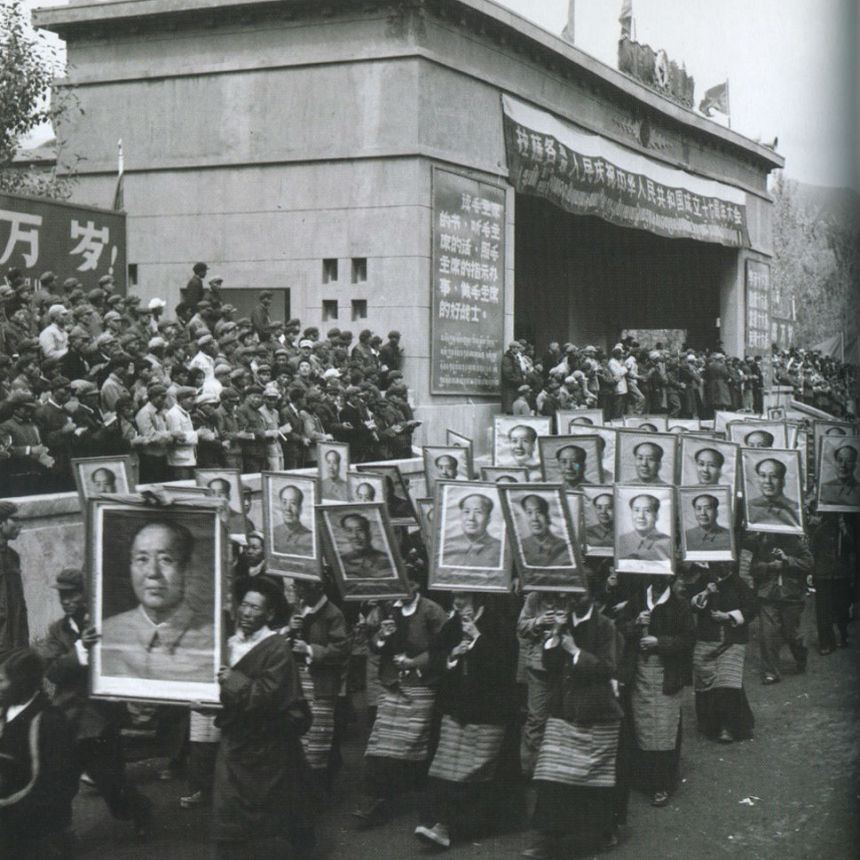|
|
http://foreignpolicy.com/slideshow/when-tibet-loved-china/

In the wake of the Great Leap Forward, a failed crop-production campaign that led to the death of tens of millions of people between 1958 and 1961, Chairman Mao Zedong retreated, and spent the next five years licking his wounds and plotting revenge against the cadres who had criticized his policies. When he returned to the national stage in 1966, it was to launch the decade-long Cultural Revolution, in which he managed to convince the whole nation to replace right and wrong with pro- and anti-Mao (some things that were anti-Mao: tradition, religion, elders). The campaign convulsed the entire nation, from Beijing to Shanghai and even to the Tibetan capital of Lhasa, conquered (or, as Beijing says, "liberated") in 1950.
The Tibetan writer and novelist Tsering Woeser was born into this madness in 1966; her father, Tsering Dorjee, was an officer in China's People's Liberation Army and something of an amateur photographer. As Tibetans -- like the rest of their countrymen -- burned old books, tortured their religious leaders, and attacked (and sometimes murdered) their parents, Woeser's father was there to witness it.
After her father died, Woeser published the photos in Taiwan in 2006, in a book titled Forbidden Memory: Tibet During the Cultural Revolution. In his introduction to the book, Wang Lixiong, Woeser's husband and a prominent writer and scholar, notes: "In the face of the world, the Cultural Revolution is an embarrassment for the Communist Party; and Tibet is also an embarrassment, so the Cultural Revolution in Tibet has become doubly taboo."
Today, Tibet is once again in flames, literally: nearly 100 Tibetans have self-immolated since 2009, protesting against Chinese rule. This installment ofFP's Once Upon a Time series shows the Land of Snows from a long-forgotten period, when Tibet's enemy wasn't China, but itself. |
|